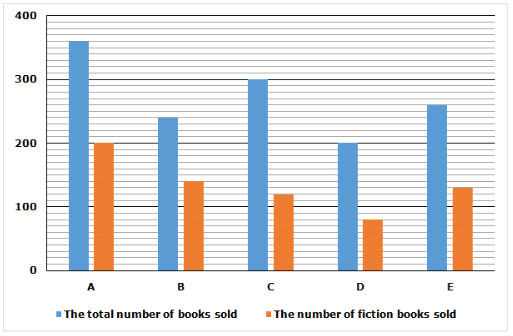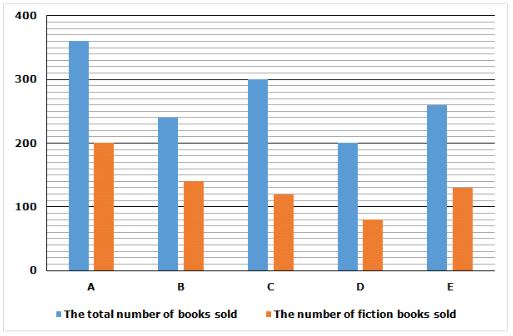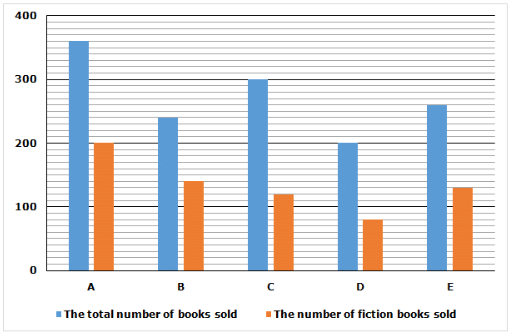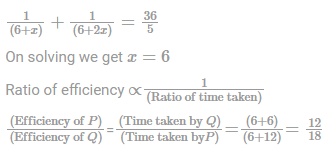Goa PCS Pre-Screening Mock Test- 7 - GPSC (Goa) MCQ
30 Questions MCQ Test - Goa PCS Pre-Screening Mock Test- 7
Directions : Study the given information carefully to answer the given questions:
Eight persons, J, K, L, M, N, O, P, and Q are sitting around a circular table facing the centre with equal distances between each other (but not necessarily in the same order). Each one of them is also related to N in some way or the other.
K sits third to the left of N. Only one person’s sits between N and Q. N’s sister sits to the immediate right of Q. Only two persons sit between N’s sister and N’s mother. J sits to the immediate right of N’s mother. P sits immediate right of M. N’s brother sits third to the right of P. N’s wife sits second to the left of N’s brother.Only three persons sit between N’s wife and L. N’s son sits second to the right of N’s father. Only two persons sit between N’s father and N’s daughter.
Q. Who among the following is the son of N?
Directions : Study the given information carefully to answer the given questions:
Eight persons, J, K, L, M, N, O, P, and Q are sitting around a circular table facing the centre with equal distances between each other (but not necessarily in the same order). Each one of them is also related to N in some way or the other.
K sits third to the left of N. Only one person’s sits between N and Q. N’s sister sits to the immediate right of Q. Only two persons sit between N’s sister and N’s mother. J sits to the immediate right of N’s mother. P sits immediate right of M. N’s brother sits third to the right of P. N’s wife sits second to the left of N’s brother.Only three persons sit between N’s wife and L. N’s son sits second to the right of N’s father. Only two persons sit between N’s father and N’s daughter.
Q. How many persons sit between N and K, when counted from the left of K?
Directions : Study the given information carefully to answer the given questions:
Eight persons, J, K, L, M, N, O, P, and Q are sitting around a circular table facing the centre with equal distances between each other (but not necessarily in the same order). Each one of them is also related to N in some way or the other.
K sits third to the left of N. Only one person’s sits between N and Q. N’s sister sits to the immediate right of Q. Only two persons sit between N’s sister and N’s mother. J sits to the immediate right of N’s mother. P sits immediate right of M. N’s brother sits third to the right of P. N’s wife sits second to the left of N’s brother.Only three persons sit between N’s wife and L. N’s son sits second to the right of N’s father. Only two persons sit between N’s father and N’s daughter.
Q. Who sits to the immediate right of Q?
Directions : Study the given information carefully to answer the given questions:
Eight persons, J, K, L, M, N, O, P, and Q are sitting around a circular table facing the centre with equal distances between each other (but not necessarily in the same order). Each one of them is also related to N in some way or the other.
K sits third to the left of N. Only one person’s sits between N and Q. N’s sister sits to the immediate right of Q. Only two persons sit between N’s sister and N’s mother. J sits to the immediate right of N’s mother. P sits immediate right of M. N’s brother sits third to the right of P. N’s wife sits second to the left of N’s brother.Only three persons sit between N’s wife and L. N’s son sits second to the right of N’s father. Only two persons sit between N’s father and N’s daughter.
Q. Which of the following statements is true with respect to the given information?
Directions : Study the given information carefully to answer the given questions:
Eight persons, J, K, L, M, N, O, P, and Q are sitting around a circular table facing the centre with equal distances between each other (but not necessarily in the same order). Each one of them is also related to N in some way or the other.
K sits third to the left of N. Only one person’s sits between N and Q. N’s sister sits to the immediate right of Q. Only two persons sit between N’s sister and N’s mother. J sits to the immediate right of N’s mother. P sits immediate right of M. N’s brother sits third to the right of P. N’s wife sits second to the left of N’s brother.Only three persons sit between N’s wife and L. N’s son sits second to the right of N’s father. Only two persons sit between N’s father and N’s daughter.
Q. How is J related to K?
Directions : In these questions, relationship between different elements are shown in the statements. These statements are followed by two conclusions. Give answer
Q. Statements: W>R>K=S, R≥N=P
Conclusions: I.W>P II. R=S
Directions : In these questions, relationship between different elements are shown in the statements. These statements are followed by two conclusions. Give answer
Q. Statements: T>K≤R=M
Conclusions: I.T>R II. K≤M
Directions : In these questions, relationship between different elements are shown in the statements. These statements are followed by two conclusions. Give answer
Q. Statements: V≥M, A>M, R≤V
Conclusions: I.V>A II. M=V
Directions : In these questions, relationship between different elements are shown in the statements. These statements are followed by two conclusions. Give answer
Q. Statements: P<Q<C≤M=F
Conclusions: I.Q≤F II.Q<F
Directions : In these questions, relationship between different elements are shown in the statements. These statements are followed by two conclusions. Give answer
Q. Statements: W≤Y>Z=X>P>J
Conclusions: I.Y>P II. Z<W
Directions : In each of the questions given below, a group of digits is given followed by four combinations of letter/symbols numbered (a), (b), (c) and (d). You have to find out which of the four combinations correctly represents the group of digits based on the letter/symbol codes and the conditions given below. If none of the four combinations represents the group of digits correctly, give (e) i.e. ‘None of these’ as the answer.
Conditions:
(i) If the first digit is odd and last digit is even, the codes for the first and the last digits are to be interchanged.
(ii) If the first as well as the last digit is even, both are to be coded by the code for last digit.
(iii) If the first as well as the last digit is odd, both are to be coded as X.
(iv) If the first digit is even and last digit is odd, both are to be coded by the code for the first digit.
(v) If 0 is preceded and followed by odd number then 0 is coded as ^.
(vi) 0 is neither odd number nor even number.
Q. 8135246
Directions : In each of the questions given below, a group of digits is given followed by four combinations of letter/symbols numbered (a), (b), (c) and (d). You have to find out which of the four combinations correctly represents the group of digits based on the letter/symbol codes and the conditions given below. If none of the four combinations represents the group of digits correctly, give (e) i.e. ‘None of these’ as the answer.
Conditions:
(i) If the first digit is odd and last digit is even, the codes for the first and the last digits are to be interchanged.
(ii) If the first as well as the last digit is even, both are to be coded by the code for last digit.
(iii) If the first as well as the last digit is odd, both are to be coded as X.
(iv) If the first digit is even and last digit is odd, both are to be coded by the code for the first digit.
(v) If 0 is preceded and followed by odd number then 0 is coded as ^.
(vi) 0 is neither odd number nor even number.
Q. 4307058
Directions : In each of the questions given below, a group of digits is given followed by four combinations of letter/symbols numbered (a), (b), (c) and (d). You have to find out which of the four combinations correctly represents the group of digits based on the letter/symbol codes and the conditions given below. If none of the four combinations represents the group of digits correctly, give (e) i.e. ‘None of these’ as the answer.
Conditions:
(i) If the first digit is odd and last digit is even, the codes for the first and the last digits are to be interchanged.
(ii) If the first as well as the last digit is even, both are to be coded by the code for last digit.
(iii) If the first as well as the last digit is odd, both are to be coded as X.
(iv) If the first digit is even and last digit is odd, both are to be coded by the code for the first digit.
(v) If 0 is preceded and followed by odd number then 0 is coded as ^.
(vi) 0 is neither odd number nor even number.
Q. 7503608
Directions : In each of the questions given below, a group of digits is given followed by four combinations of letter/symbols numbered (a), (b), (c) and (d). You have to find out which of the four combinations correctly represents the group of digits based on the letter/symbol codes and the conditions given below. If none of the four combinations represents the group of digits correctly, give (e) i.e. ‘None of these’ as the answer.
Conditions:
(i) If the first digit is odd and last digit is even, the codes for the first and the last digits are to be interchanged.
(ii) If the first as well as the last digit is even, both are to be coded by the code for last digit.
(iii) If the first as well as the last digit is odd, both are to be coded as X.
(iv) If the first digit is even and last digit is odd, both are to be coded by the code for the first digit.
(v) If 0 is preceded and followed by odd number then 0 is coded as ^.
(vi) 0 is neither odd number nor even number.
Q. 9256473
Directions : In each of the questions given below, a group of digits is given followed by four combinations of letter/symbols numbered (a), (b), (c) and (d). You have to find out which of the four combinations correctly represents the group of digits based on the letter/symbol codes and the conditions given below. If none of the four combinations represents the group of digits correctly, give (e) i.e. ‘None of these’ as the answer.
Conditions:
(i) If the first digit is odd and last digit is even, the codes for the first and the last digits are to be interchanged.
(ii) If the first as well as the last digit is even, both are to be coded by the code for last digit.
(iii) If the first as well as the last digit is odd, both are to be coded as X.
(iv) If the first digit is even and last digit is odd, both are to be coded by the code for the first digit.
(v) If 0 is preceded and followed by odd number then 0 is coded as ^.
(vi) 0 is neither odd number nor even number.
Q. 2976581
Directions: In each of the questions below are given four statements followed by four conclusions numbered I, II, III & IV, you have to take the given statements to be true even if they seem to be at variance from commonly known facts. Read the conclusions and then decide which of the given conclusions logically follows from the given statements disregarding commonly known facts.
Q. Statements: Some star are light. All light are branches. All branches are nets. Some nets are drills.
Conclusions:
I. Some drills are light.
II. Some nets are star.
III. Some branches are star.
IV. Some drills are star.
Directions: In each of the questions below are given four statements followed by four conclusions numbered I, II, III & IV, you have to take the given statements to be true even if they seem to be at variance from commonly known facts. Read the conclusions and then decide which of the given conclusions logically follows from the given statements disregarding commonly known facts.
Q. Statements: All result are mark. Some mark are bolds. Some bolds are lanes. All lanes are roads.
Conclusions:
I. Some roads are bolds.
II. Some lanes are mark.
III. Some bolds are result.
IV. Some roads are mark.
Directions: In each of the questions below are given four statements followed by four conclusions numbered I, II, III & IV, you have to take the given statements to be true even if they seem to be at variance from commonly known facts. Read the conclusions and then decide which of the given conclusions logically follows from the given statements disregarding commonly known facts.
Q. Statements: Some paper are book. Some book are dishes. All dishes are jungles. All jungles are nut.
Conclusions:
I. Some nut are paper.
II. Some jungles are paper.
III. Some nut are dishes.
IV. Some jungles are book.
Directions: In each of the questions below are given four statements followed by four conclusions numbered I, II, III & IV, you have to take the given statements to be true even if they seem to be at variance from commonly known facts. Read the conclusions and then decide which of the given conclusions logically follows from the given statements disregarding commonly known facts.
Q. Statements: All rock are cup. No cup is ring. Some rings are doors. All doors are winds.
Conclusions:
I. Some winds are rock.
II. Some winds are rings.
III. No winds is rock.
IV. Some rings are rock.
Directions: In each of the questions below are given four statements followed by four conclusions numbered I, II, III & IV, you have to take the given statements to be true even if they seem to be at variance from commonly known facts. Read the conclusions and then decide which of the given conclusions logically follows from the given statements disregarding commonly known facts.
Q. Statements: All leg are finger. Some finger are timers. Some timers are worlds. Some worlds are buses.
Conclusions:
I. Some buses are timers.
II. Some worlds are finger.
III. Some worlds are leg.
IV. Some buses are finger.
Directions : Read the following information and answer the questions that follow:
A shopkeeper sold six laptops— A, B, C, D, E and F — during a period of Monday to Saturday, one laptop on each day.
(i) The laptop C was sold at least before three laptops.
(ii) The laptop F was sold on Tuesday.
(iii) Both the laptops B and E were sold at least before one laptop.
(iv) The laptop D was sold immediately after the laptop C.
(v) At least four laptops were sold after the laptop E.
Q. How many laptops were sold after the laptop D?
Directions : Read the following information and answer the questions that follow:
A shopkeeper sold six laptops— A, B, C, D, E and F — during a period of Monday to Saturday, one laptop on each day.
(i) The laptop C was sold at least before three laptops.
(ii) The laptop F was sold on Tuesday.
(iii) Both the laptops B and E were sold at least before one laptop.
(iv) The laptop D was sold immediately after the laptop C.
(v) At least four laptops were sold after the laptop E.
Q. How many laptops were sold before the laptop F?
Directions : Read the following information and answer the questions that follow:
A shopkeeper sold six laptops— A, B, C, D, E and F — during a period of Monday to Saturday, one laptop on each day.
(i) The laptop C was sold at least before three laptops.
(ii) The laptop F was sold on Tuesday.
(iii) Both the laptops B and E were sold at least before one laptop.
(iv) The laptop D was sold immediately after the laptop C.
(v) At least four laptops were sold after the laptop E.
Q. The laptop A was sold immediately after
Directions : Read the following information and answer the questions that follow:
A shopkeeper sold six laptops— A, B, C, D, E and F — during a period of Monday to Saturday, one laptop on each day.
(i) The laptop C was sold at least before three laptops.
(ii) The laptop F was sold on Tuesday.
(iii) Both the laptops B and E were sold at least before one laptop.
(iv) The laptop D was sold immediately after the laptop C.
(v) At least four laptops were sold after the laptop E.
Q. If Siddharth is the person who purchased the laptop sold on Wednesday, then the laptop purchased by him is
Directions : Read the following information and answer the questions that follow:
A shopkeeper sold six laptops— A, B, C, D, E and F — during a period of Monday to Saturday, one laptop on each day.
(i) The laptop C was sold at least before three laptops.
(ii) The laptop F was sold on Tuesday.
(iii) Both the laptops B and E were sold at least before one laptop.
(iv) The laptop D was sold immediately after the laptop C.
(v) At least four laptops were sold after the laptop E.
Q. How many laptops were sold before E?
A Large canister contains 300 liters of Milk. The owner of the canister replaces 30 liters of milk with water. After some time, out of greed, he again replaces 60 liters of milk with water. Meanwhile, a thief came and stole 90 liters of milk and replaced it with water. Find what is the quantity of water in the final mixture.
P and Q can finish work in 7.2 days but time taken by P if he works alone is 6 + p and Q working alone take 6 + q days. Also, p:q = 1 : 2. What will be the ratio of efficiency of P and Q?
Study the following information carefully and answer the given questions.
The given bar graph shows the total number of books (fiction and non-fiction) sold in five different book fairs i.e. A, B, C, D and E and also given the number of fiction books sold in these five different book fairs.

Q. If the ratio of the total number of books sold in book fair D to book fair F is 4:7 and the number of fiction books sold in book fair F is 50 more than that of non-fiction books, then find the number of non-fiction books sold in book fair F?
Study the following information carefully and answer the given questions.
The given bar graph shows the total number of books (fiction and non-fiction) sold in five different book fairs i.e. A, B, C, D and E and also given the number of fiction books sold in these five different book fairs.

Q. Find the difference between the number of non-fiction books sold in book fair D and the number of non-fiction books sold in book fair E?
Study the following information carefully and answer the given questions.
The given bar graph shows the total number of books (fiction and non-fiction) sold in five different book fairs i.e. A, B, C, D and E and also given the number of fiction books sold in these five different book fairs.

Q. Find the ratio of the number of non-fiction books sold in book fair C to the total number of books sold in book fair A?




















